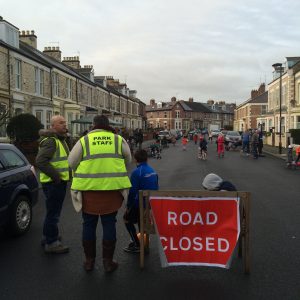The ‘squeezed middle’ is a term which has attracted a great deal of attention since Ed Milliband’s struggle to define it on the BBC’s Today programme in November 2010 (it even has a Twitter hashtag: #squeezedmiddle). Miliband ummed and aahed and got tied in knots by Nick Robinson, but in a piece in The Telegraph explained himself a bit better. Using a phrase we’ve heard repeatedly since (most recently, from George Osborne as he launched the 2013 Budget), Miliband described the “people who work hard and want to get on”. He seemed reluctant to define the ‘squeezed middle’ further but depicted an evocative emotional landscape of dashed dreams, anxieties, and fears.
Miliband took the idea of the ‘squeezed middle’ from the Resolution Foundation, a think tank established in 2005 to improve the living standards of low-to-middle income households (low-to-middle earners, LMEs). In a series of audits (the latest published in 2010), the Resolution Foundation described the 15 million Britons who live in low-to-middle income households. These households live below the median income but above the income of the poorest 10% of households. For a couple without children, that means their household income sits between £12,000 and £30,000; for a couple with three children, between £19,200 and £48,500. These are not poor families, but nor are they well-off. They are often too rich to get much help from the welfare and benefits system, but not in a position to really flourish in a market economy.
Most own their own homes, though a significant minority live in the private- or social-rented sectors. Most are in employment, full- or part-time, though many women are stay-at-home mothers. Some of the 15 million have degrees, but many more are educated to GCSE or A-level standard. They are particularly likely to have skilled or semi-skilled jobs and to work in sectors such as retail, health and social care, hospitality, manufacturing, construction and public administration.
The ‘squeezed middle’, then, echoes with other keywords such as low pay, the living wage, and the working poor (households with one or two adults in low paid jobs, even those paying just the minimum wage, would find themselves included).
What the ‘squeezed middle’ isn’t is the traditionally understood middle class. It maps on to what might previously have been described as social classes C1, C2 and D, the skilled working and lower-middle classes. It’s also not ‘middle England’, with all the conservative (big and little ‘c’) baggage that that phrase carries.
In 2011 the Oxford English Dictionary identified the ‘squeezed middle’ as their Word of the Year, defining it as “the section of society regarded as particularly affected by inflation, wage freezes and cuts in public spending during a time of economic difficulty, consisting principally of those on low or middle incomes.” This is a succinct and helpful definition which connects both to ‘objective’ issue of income, and to the more ‘subjective’ question of experience.
Notwithstanding the term’s popularity, there are a number of criticisms that can be leveled at it. Without doubt, Miliband and other politicians, on the right and left, have identified the ‘squeezed middle’ with swing voters whose ballots they are keen to attract. And with the hard-working, deserving ‘strivers’ we’re supposed to support, in opposition to the undeserving, feckless ‘skivers’ we’re supposed to view with contempt. Miliband’s and Osborne’s attachment to the idea of the “people who work hard and want to get on” belies a troubling moral distinction which need not be at the heart of debates about recession and austerity.
Ian Jack in The Guardian argues that the “‘Squeezed middle’ is far too cuddly a term for the damage being done to British and American wages by changes in global trade, and the lack of any serious political challenge to free-market theology.” For Jack, the idea of the ‘squeezed middle’ is not political enough. It doesn’t allow for an appropriate critique of the neoliberal agendas which enable low and stagnant pay.
For others, all the attention paid the ‘squeezed middle’ (not least in the media) draws attention away from those who really find themselves at the blunt edge of austerity, the poor. Even the Resolution Foundation acknowledges that these aren’t the most deserving households.
Yet, for me, there is still something provocative about the idea of the ‘squeezed middle’.
The idea of the ‘middle’ connects to a range of sociological debates about the ‘missing middle’ and our academic tendency to study the most vulnerable or the most powerful. Steve Roberts and Robert MacDonald explore this in the context of youth studies; they draw attention to the need to think about the ordinary, the ‘invisible majority’, those who find themselves between the middle class youth who seemingly make their transitions to adulthood with relative ease and the excluded poor, who find themselves outside education, employment or training. For Roberts and MacDonald, researching the ‘missing middle’ gives us a fuller and more diverse picture of social change. They argue that this middle may appear to be ‘getting by’ but suggest that more may be going on, under the surface. These unseen, undocumented experiences of struggle, to find and keep a job, to further education or training, to juggle work and family life, and so on, echo with my concerns here.
Roberts and MacDonald build on the arguments of David Byrne (2005) who in turn connects to the work of Michael Zweig, writing in the US about the ‘working class majority’. For Byrne and Zweig, the majority of US and UK households find themselves neither in the middle class, nor in what is most commonly identified as the working class (the dispossessed, the excluded, the most vulnerable). This ‘missing middle’, with jobs in which they have little autonomy, but living in their own homes with little visible deprivation, are barely understood: as Byrne argues, “The absence here is of knowledge about people like these. How do they live? Statistically we know a lot – they fill in census forms and Neighbourhood Statistics yield up the data cited above. But we know very little about how they think, how they feel about work, about their identities in these places, about their schools and about their hopes for the future.”
Pieces by journalists, activists, and others are beginning to sketch out some of the contours of life in ordinary families, in the context of the the ongoing recession and the austerity measures I described in a previous blog. These range from reduced food spending and the turn to discounters such as Aldi and Lidl, to the need to turn down heating to cut fuel costs, or to giving up a family car, or to delaying retirement.
What these pieces hint at – and what really interests me – is the position of these families ‘on the edge’, ‘struggling’, ‘juggling’ ‘vulnerable’, ‘unstable’. These are families who are doing OK, are ‘getting by’ but for whom a single knock (reduced working hours, rising food and fuel prices, rent increases, ill-health, family separation) might be enough to push them into poverty. They are living on edge of security, a few degrees from insecurity, threatened, at risk.
What I’m trying to understand in this project is how these risks and insecurities are lived and negotiated, and the focus of my project is on relationships. In their best form, relationships help us to feel secure, ‘contained’, or ‘held’ and to fend off anxiety; my question then is how do relationships help the ‘squeezed middle’ to negotiate these social and economic challenges and to achieve (or maintain) material and emotional security.
In his Telegraph piece, Ed Miliband explained: “The squeeze on family life is not just financial, but it is also a squeeze on our time, our relationships and our communities.” I’m not so sure that Ed Miliband is taking his own words seriously, but it is this concern that is at the heart of my project.





